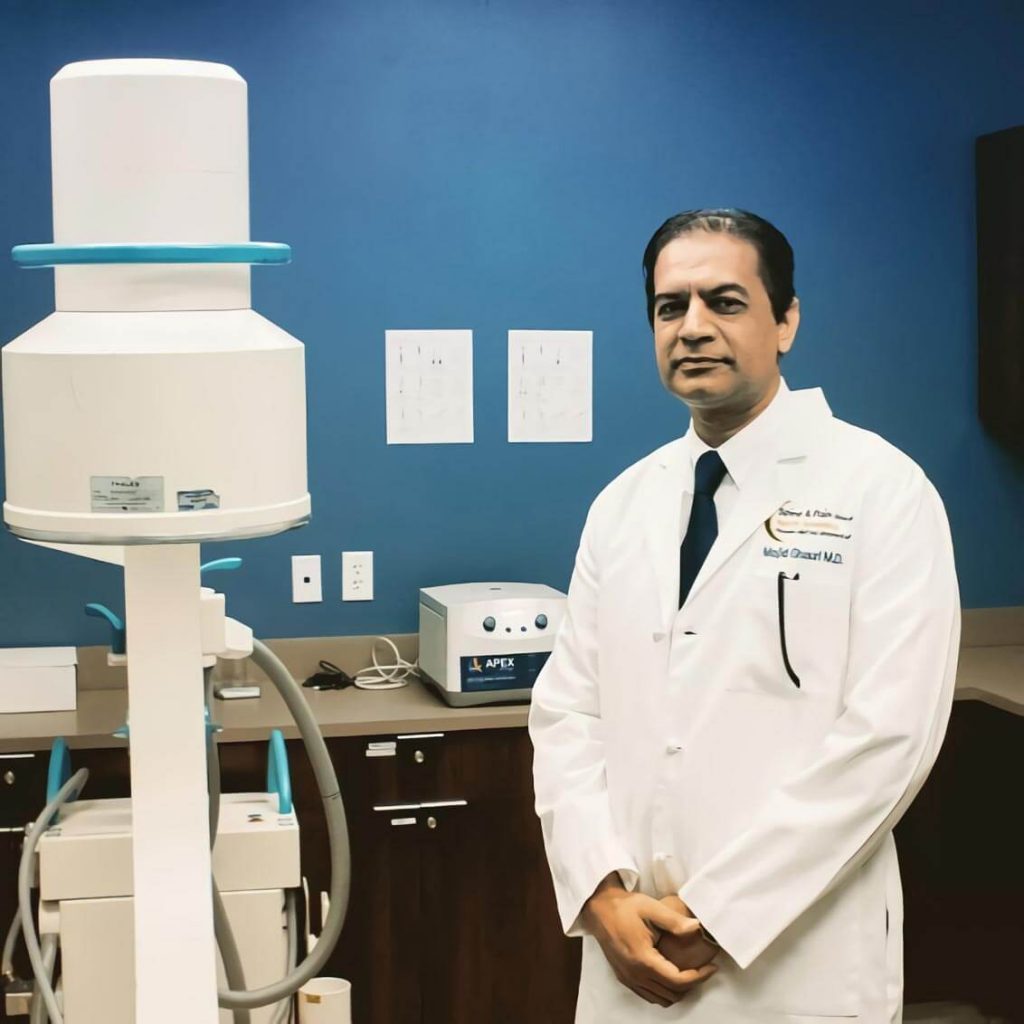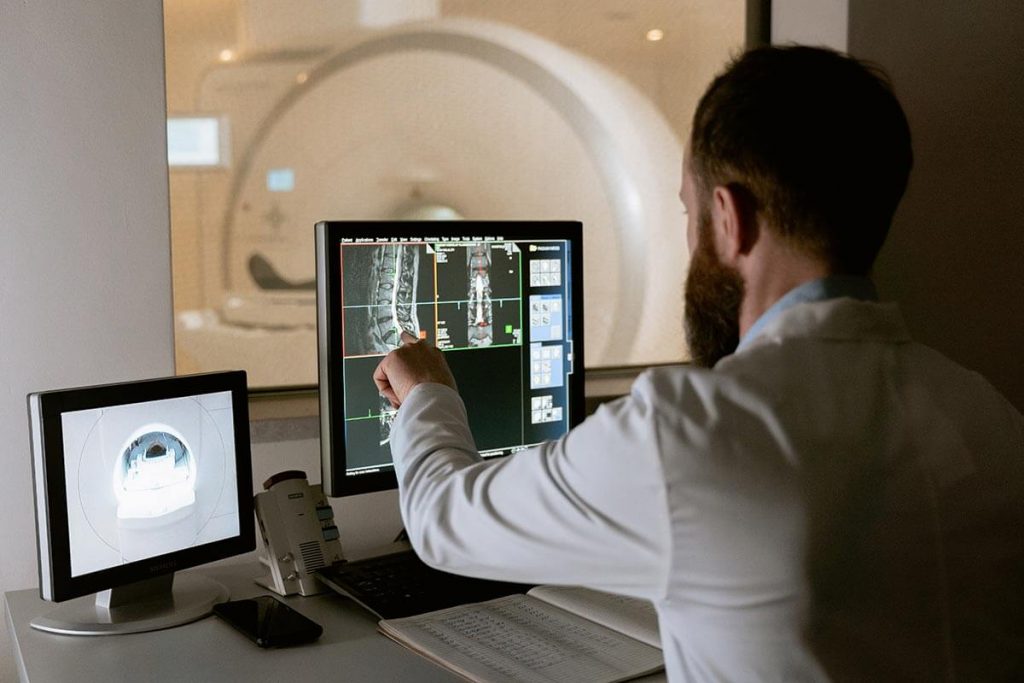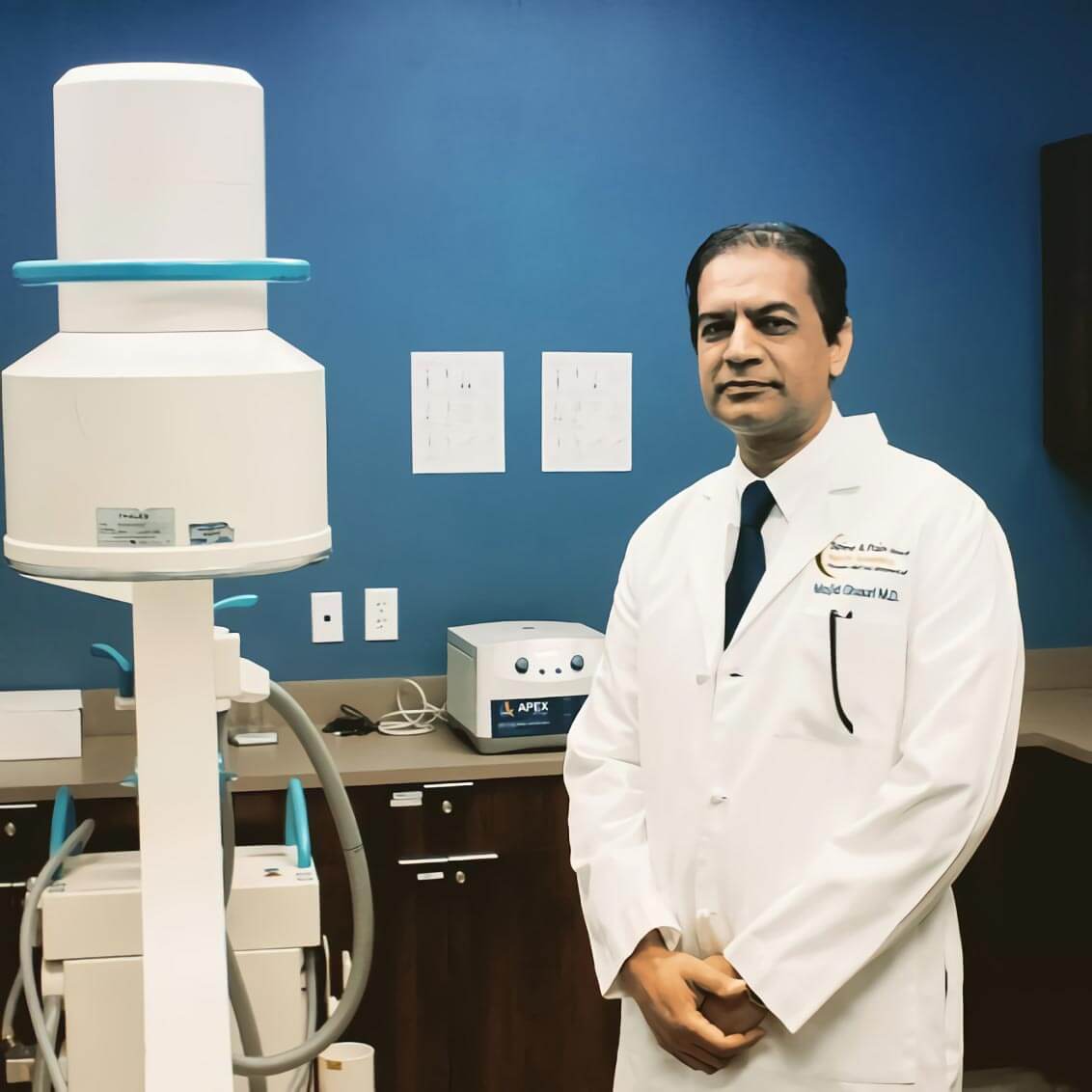- Physician Interview and Physical Exam
- Lab Tests
- Imaging Tests
- Nerve Tests
- Unique Case of Chronic Pain Syndrome
- Thorough Pain Exam

According to the latest research, 50.2 million U.S. adults are experiencing chronic pain at any point in time. Finding the cause of the pain is a top priority because chronic pain interferes with the ability to participate in daily and recreational activities and to comfortably work. Chronic pain doctors can perform a variety of lab and imaging tests to try and pinpoint the cause of chronic pain for the purpose of developing an effective treatment plan.
Physician Interview and Physical Exam First
Diagnosing chronic pain is not always easy. It may be easy if it is due to something obvious like a broken bone, but often the pain is due to something like a developing illness or disease or an unsuspected injury. The first thing the doctor will do is interview the patient about the signs and symptoms of chronic pain. The patient is asked questions about things like:
- Potential injuries
- Personal medical history
- Family medical history
- Specific symptoms
- Past surgeries
- Illnesses
- Pain intensity
- The extent to which the pain is interfering with life and work activities
- What activities or movements make the pain better or worse

Sometimes, chronic pain has a clear cause, like arthritis. Other times, the cause is not so obvious. The common types of pain include back pain, muscle pain, neurogenic pain (nerve pain) and joint pain. After the interview and perhaps a neurological exam, the doctor will have a better idea of which lab and diagnostic tests to order.
Lab Tests for Chronic Pain Diagnosis
After the initial interview and physical exam, the doctor is likely to order a blood test for pain. One common pain test is the A1C which identifies prediabetes and diabetes. Blood tests can help the doctor identify physical issues like the following.
- Diseases like rheumatoid arthritis, diabetes, cancer, etc.
- Levels of inflammation
- Infection
- Organ functioning
The cause of chronic pain is unlikely to be diagnosed strictly by a lab test. It takes more than one medical test that includes imaging, nerve and other tests.
Imaging Tests for Chronic Pain Diagnosis
Pain diagnosing usually includes imaging tests which are radiologic tests. High-tech imaging equipment can detect anomalies in the bones, organs and other soft tissues. Common tests include the following.
X-rays
X-rays are used to identify abnormalities in bones.
Bone scan
A bone scan can help diagnose a bone fracture, infection or other issues concerning bones. A small amount of radioactive material is injected into a blood vessel. The injected material is absorbed by the bones in areas that are not experiencing normal activity. A computerized scanner then identifies the abnormalities by detecting the areas with a higher level of radioactive material.
MRI
The MRI (magnetic resonance imaging) can show soft tissues, nerves and bones. This imaging test does not require an injection of radioactive material. Instead, it uses magnets and radio waves which produce a computerized image. In some cases, an injection of contrast material is used to produce clearer images.

CT scan
The CT scan (computed tomography) uses computers and x-rays to produce an image that is a cross-section of the body. Sometimes, a solution is injected into a vein to produce clearer pictures of soft tissues, nerves and bones. The patient lies on a table that moves through the CT scanner.
Myelogram
The myelogram is used to diagnose a disorder in the spinal canal or spinal cord. A specialized dye is injected into the fluid around the spinal cord and nerves. Following the injection, an MRI, CT scan or x-ray is done. This test is used to diagnose conditions like a herniated disk or bone fracture.
Ultrasound imaging
High-frequency sound waves are bounced off the body’s tissues, producing real-time images on a computer screen.
Musculoskeletal (MSK) Ultrasound
An ultrasound scan is a diagnostic procedure in which high-frequency sound waves are used to …
Discography
A dye is injected in a spinal disk that is believed to be the source of pain. X-rays are taken of the tissues outlined by the dye. This test is used when back surgery is under consideration or to assist with determining the best treatment.
Nerve Tests for Chronic Pain Diagnosis
Nerve damage and nerve compression are common sources of chronic pain. There are several nerve diagnostic pain tests the pain doctor can order.
Nerve block
An injection of an anesthetic is given in one or more locations where the nerves are believed to be causing the pain. The nerves are numbed to help pinpoint the source of the pain by easing the pain.
Medial Branch Nerve Blocks
People with back or neck pain frequently see a physician asking for relief. One of…
EMG
An EMG (electromyography) tests the muscles to determine if they are responding normally to nerve stimulation.
NCV
The NCV (nerve conduction velocity) diagnostic test evaluates nerve function or nerve damage. It is frequently done in conjunction with the EMG.
QST
QST (Quantitative sensory testing) measures sensory thresholds. It is a non-invasive test that assesses nerve gain or loss in functioning. It involves multiple tests, like testing on the skin using touch, temperature, pressure and vibration.
Unique Case of Chronic Pain Syndrome
When pain continues long after the cause of the pain is no longer present, it is called chronic pain syndrome (CPS). This is a unique type of pain. A chronic pain syndrome diagnosis depends on the doctor assessing physical and mental components.
Some doctors believe people with CPS have a problem with how their body handles stress, producing impacts on nerves and other physical systems. Other pain doctors believe it may be a learned response due to changes made in behaviors during a healing process – behaviors not necessary once healed.
The mental aspect is mentioned because people with mental health conditions or major depression are more likely to experience CPS. Even extreme stress can lead to chronic pain syndrome, like the death of a loved one. Research has shown that functional changes in synaptic processes in the brain and spinal cord can lower the pain threshold. The longer CPS endures, the more impact it has on physical and mental health.
To diagnose this particular type of pain, the doctor will ask questions concerning the source and severity of pain and treatments tried in the past. Imaging tests described earlier are also used to detect physical problems. The treatment goal is to reduce pain intensity as a minimum and eliminate the pain at best through physical and/or mental interventions.
Thorough Pain Exam
It is up to the doctor to determine how to diagnose chronic pain. A thorough pain exam will include a variety of diagnostic tests to discover the source of chronic pain. In addition to the ones mentioned, the doctor may also do a mental health exam since depression and anxiety often exist along with a chronic pain condition. In fact, studies indicate that more than 67 percent of people suffering from chronic pain are also suffering from a comorbid psychiatric disorder.
Pain directly impacts the quality of life. Fortunately, there is an increasing number of ways that chronic pain doctors can locate the source of pain in order to develop an effective treatment plan.
Sources
- https://www.sciencedaily.com/releases/2021/04/210420092901.htm
- https://www.cdc.gov/diabetes/managing/managing-blood-sugar/a1c.html
- https://www.ncbi.nlm.nih.gov/books/NBK470523/
- https://www.ncbi.nlm.nih.gov/pmc/articles/PMC315482/
